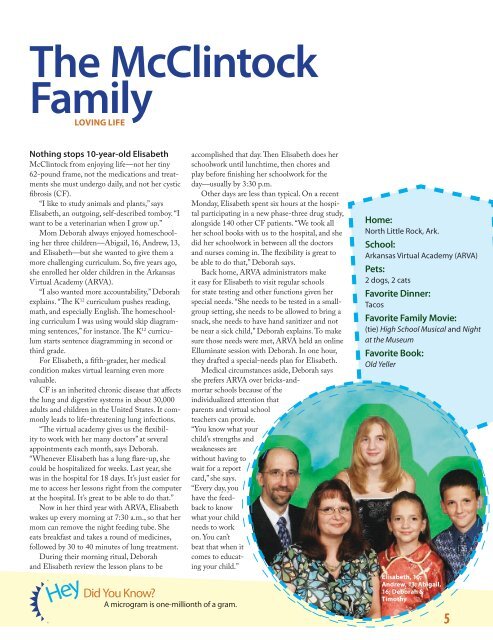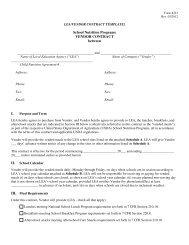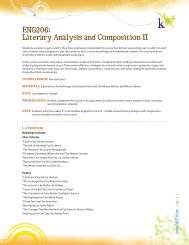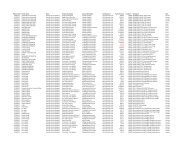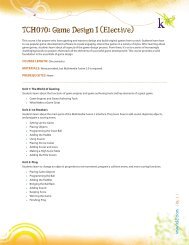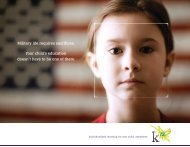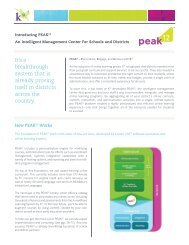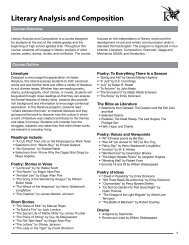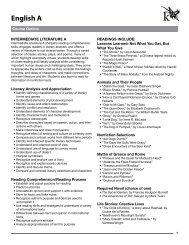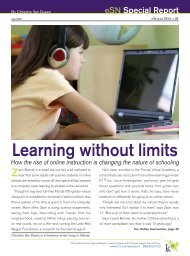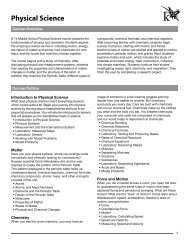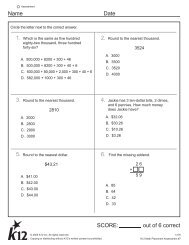It All Adds Up - K12.com
It All Adds Up - K12.com
It All Adds Up - K12.com
You also want an ePaper? Increase the reach of your titles
YUMPU automatically turns print PDFs into web optimized ePapers that Google loves.
The McClintockFamilyLOVING LIFENothing stops 10-year-old ElisabethMcClintock from enjoying life—not her tiny62-pound frame, not the medications and treatmentsshe must undergo daily, and not her cysticfibrosis (CF).“I like to study animals and plants,” saysElisabeth, an outgoing, self-described tomboy. “Iwant to be a veterinarian when I grow up.”Mom Deborah always enjoyed homeschoolingher three children—Abigail, 16, Andrew, 13,and Elisabeth—but she wanted to give them amore challenging curriculum. So, five years ago,she enrolled her older children in the ArkansasVirtual Academy (ARVA).“I also wanted more accountability,” Deborahexplains. “The K 12 curriculum pushes reading,math, and especially English. The homeschoolingcurriculum I was using would skip diagrammingsentences,” for instance. The K 12 curriculumstarts sentence diagramming in second orthird grade.For Elisabeth, a fifth-grader, her medicalcondition makes virtual learning even morevaluable.CF is an inherited chronic disease that affectsthe lung and digestive systems in about 30,000adults and children in the United States. <strong>It</strong> commonlyleads to life-threatening lung infections.“The virtual academy gives us the flexibilityto work with her many doctors” at severalappointments each month, says Deborah.“Whenever Elisabeth has a lung flare-up, shecould be hospitalized for weeks. Last year, shewas in the hospital for 18 days. <strong>It</strong>’s just easier forme to access her lessons right from the computerat the hospital. <strong>It</strong>’s great to be able to do that.”Now in her third year with ARVA, Elisabethwakes up every morning at 7:30 a.m., so that hermom can remove the night feeding tube. Sheeats breakfast and takes a round of medicines,followed by 30 to 40 minutes of lung treatment.During their morning ritual, Deborahand Elisabeth review the lesson plans to beHeyDid You Know?A microgram is one-millionth of a gram.accomplished that day. Then Elisabeth does herschoolwork until lunchtime, then chores andplay before finishing her schoolwork for theday—usually by 3:30 p.m.Other days are less than typical. On a recentMonday, Elisabeth spent six hours at the hospitalparticipating in a new phase-three drug study,alongside 140 other CF patients. “We took allher school books with us to the hospital, and shedid her schoolwork in between all the doctorsand nurses coming in. The flexibility is great tobe able to do that,” Deborah says.Back home, ARVA administrators makeit easy for Elisabeth to visit regular schoolsfor state testing and other functions given herspecial needs. “She needs to be tested in a smallgroupsetting, she needs to be allowed to bring asnack, she needs to have hand sanitizer and notbe near a sick child,” Deborah explains. To makesure those needs were met, ARVA held an onlineElluminate session with Deborah. In one hour,they drafted a special-needs plan for Elisabeth.Medical circumstances aside, Deborah saysshe prefers ARVA over bricks-andmortarschools because of theindividualized attention thatparents and virtual schoolteachers can provide.“You know what yourchild’s strengths andweaknesses arewithout having towait for a reportcard,” she says.“Every day, youhave the feedbackto knowwhat your childneeds to workon. You can’tbeat that when itcomes to educatingyour child.”Home:North Little Rock, Ark.School:Arkansas Virtual Academy (ARVA)Pets:2 dogs, 2 catsFavorite Dinner:TacosFavorite Family Movie:(tie) High School Musical and Nightat the MuseumFavorite Book:Old YellerElisabeth, 10;Andrew, 13; Abigail,16; Deborah &Timothy5


